This guide on how to buy a used car is meant for anyone who isn’t mechanicly inclined or knows a lot about cars. The information within is put together by several automotive experts who have all been involved in selling or repairing used cars.
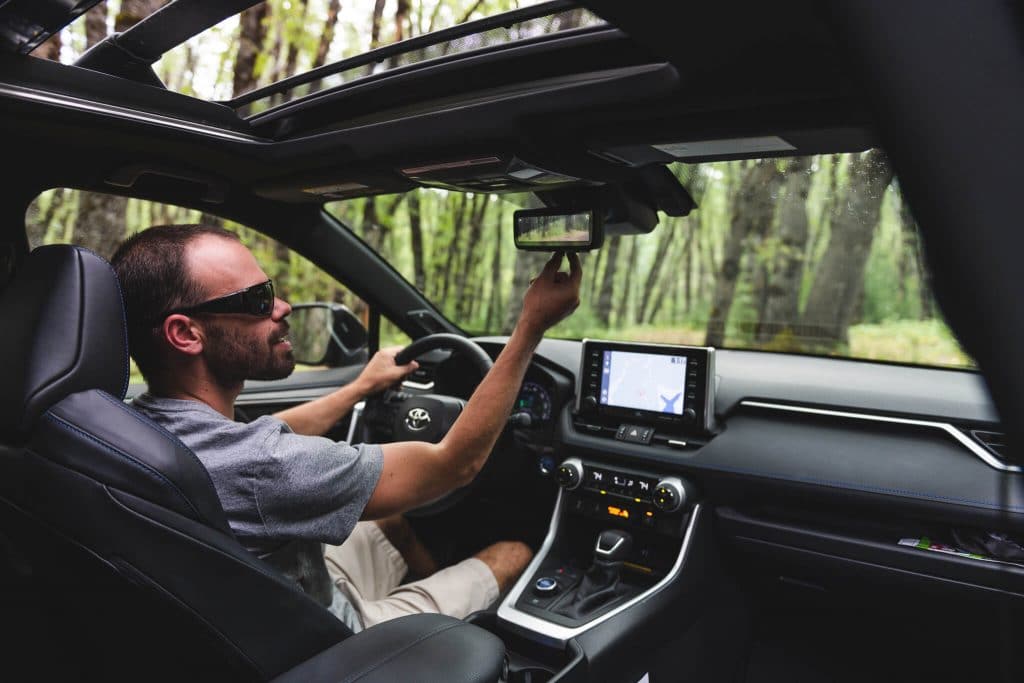
This 18-part guide should greatly reduce the chances that you’ll be buying a lemon with your next used car purchase
Table of Contents
Take the vehicle to a reputable mechanic
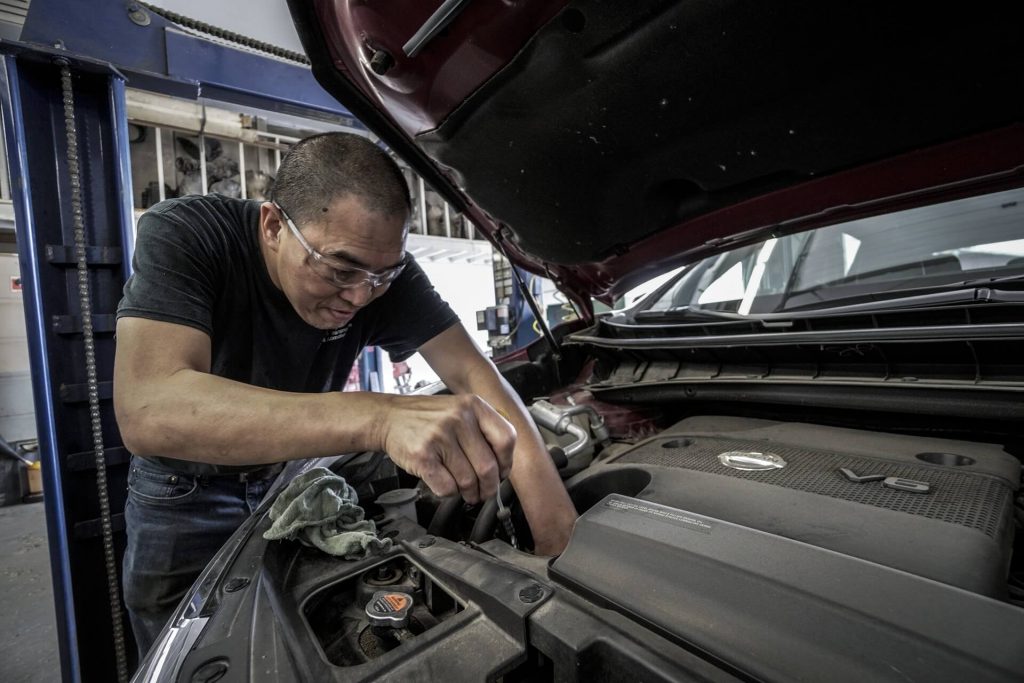
I once bought a used car and didn’t realize my mechanic wasn’t very good. Well, he was good, but he had a conflict of interest and conducted himself with shady business practices. He actually recommended a truck that he knew had problems and I’d have to pay him to fix them. I stupidly spent way too much money with him repairing this car. I’ve since found a very reputable mechanic who has excellent morals and has helped me immensely with my used vehicle purchases.
Taking your car to a reputable auto repair shop is the best option when buying a used car. Have it thoroughly inspected by a professional before you buy it. I’ve found paying for an hour of time is generally sufficient to identify everything wrong with the vehicle.
“The key word here is BEFORE you buy it. I don’t know how many people I’ve had come to my shop for an inspection after they bought it….ugghh. The $150 or so you spend is worth not buying something that may have thousands of dollars of problems.”
If taking the vehicle to a mechanic is not an option, here are some tips to help keep you from buying a lemon.
Buy a ODB Scanner/Reader
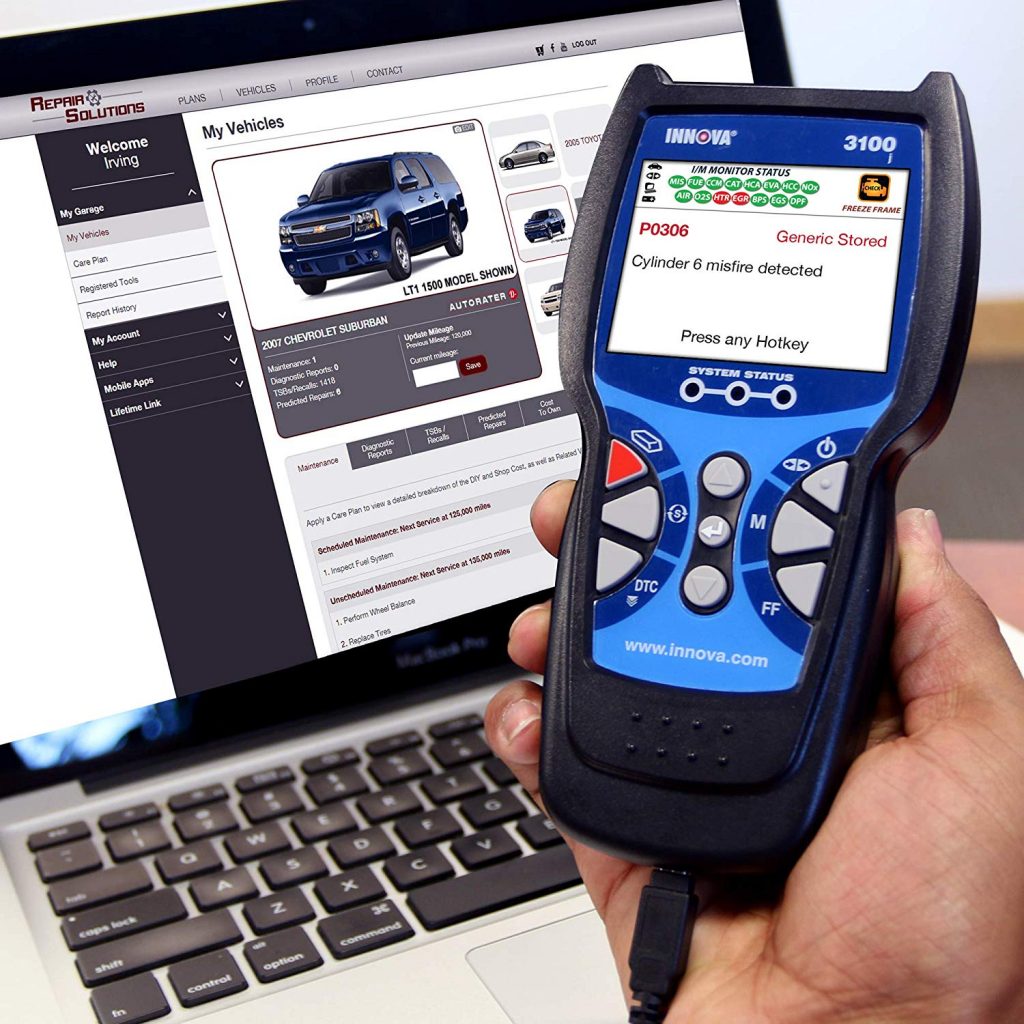
You don’t need to spend a lot, as they all do what you need here. A bluetooth OBD reader and the TORQ app for you phone seems to be pretty popular and good choice. You can expect to spend anywhere from $35 to $100 on a scanner.
Practice using it on some cars. Some of the stuff may seem daunting, but if you practice it on a car a few times, you’ll get the hang of it, and this will all make sense. You could be saving yourself thousands in repair here, so take a few hours to practice it.
You should be able to do all of the stuff with your scanner in under five minutes total. You don’t have to worry about reading and interpreting data. The main thing you want to do is check for codes in the engine and transmission ECUs.
ECU stands for Electronic Control Unit. Basically, it’s the computer that controls the engine or transmission. They are sometimes referred to as ECM, or Engine Control Module, and TCM, or Transmission Control Module. Sometimes they’ll be referred to as PCM, or Powertrain Control Module.
This is what it’s called when only one computer controls both the engine and automatic transmission. The PCM may be one physical computer, but logically, it’s 2 computers. So if you connect your scanner to a PCM, you’ll still see two separate options, one for engine, and one for transmission. Do note that if you have a manual transmission, there won’t be a transmission computer.
When you connect to each one, there should be no codes in either. If there are codes, there’s an issue. It may be minor, it may be major. Google it if you want, but not knowing what the codes mean, your best bet is to walk away. If your scanner is a better one, you can also check other modules (computers) for codes. It is pretty common on newer cars, especially European, to find obscure codes in obscure modules. Normally, they are not an issue.
Focus on the Engine and Transmission. ABS (antilock brakes) and SRS (safety restrain system…airbags, seat belts, etc) modules normally shouldn’t have codes lingering either. Make sure to also check after test driving. The codes may have been reset by the seller to hide a problem (more on that in the next paragraph). They may have returned during your test drive, so check again!
Use the scanner to check the monitors on the engine ECU/Computer. Monitors are a series of self checks that the ECU does on the engine. All applicable monitors should be set (passed/complete). They get reset when you clear the check engine light, or when you disconnect the battery (usually).
If all of the monitors haven’t passed, then it’s quite likely the person selling it has reset the check engine light recently (may be trying to hide a problem), or there’s a problem that isn’t allowing the monitor to complete. Not a good sign. Walk away. To fully complete all of the monitors can take quite a few miles and sometimes several days.
A top of the line ODB Scanner is the Innova 3100j.
A more budget friendly choice is the Ancel AD310, which also has a newer version, the Ancel AD530, which checks some additional things.
Crank the Engine Without Starting It
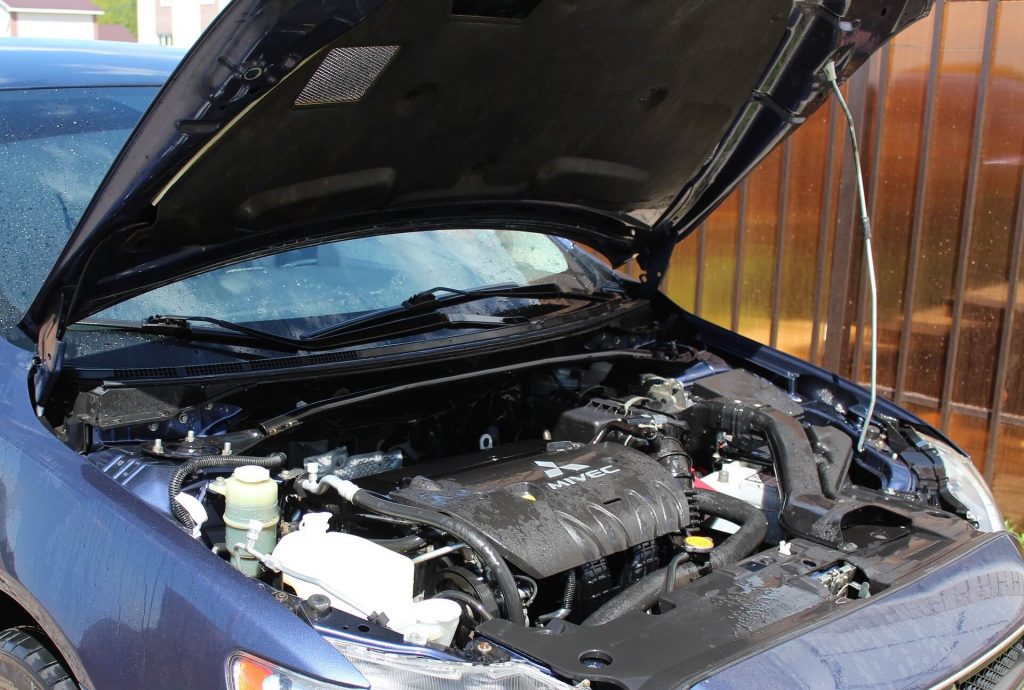
What you want to do is listen to the engine during a continuous crank. On American cars and on Mazdas, this is easy, as they have what’s known as a Clear Flood Mode. You turn the key to the on position, wait a few seconds, depress the gas pedal all the way, then try to start it.
The engine will crank away without starting for as long as you hold the key (or in the case of a push button start, until you hit the button again). If the engine starts, quickly let off the gas so you don’t revv up the engine too high and try it again. You’ll want to listen to it for a good 10 seconds or so. This is a very easy way to check compression on an engine.
The main thing you hear when cranking an engine is the electric starter working to try and spin the engine. As a piston comes up and compresses the air, the starter has to work harder to spin the engine, and the speed/pitch of the starter changes. Once the piston comes back down, it’s easier to spin the engine, so the speed/pitch changes back, and then repeats as each consecutive piston moves up in the compression stroke.
Every engine sounds different, but they all should have a very steady rhythmic starting noise. Kind of a WAAA WAAA WAAA WAAA WAAA. If one or more of the cylinders has low compression, you will hear the starter have an off-rhythmic sound that repeats.
If you have a 4 cylinder engine with one low compression cylinder, it would sound like WAAA WAAA WA WAAA WAAA WAAA WA WAAA WAAA WAAA WA WAAA etc. Every 4th pitch change will sound different than the other 3.
For reference, here’s what a normal cranking sound should be: https://www.youtube.com/watch?v=6v0h_Ygqox0
Here’s what a low compression cylinder cranking sounds like. It’s at about :55 secs: https://www.youtube.com/watch?v=pOghpmVhVng
If you listen closely, you’ll hear the unsteady rhythm. Loss of compression is usually piston rings, valves, or head gasket. All costly. If the engine sounds funny when cranking, walk away.
If the car you’re looking at doesn’t have a clear flood mode, you can remove the fuel pump relay in the engine compartment fuse box, which turns off the fuel pump. Most cars have one, but some don’t. Some cars can be a real PITA to disable it from starting.
Google the car you’re looking at with something like “YYYY Make Model clear flood” or “YYYY Make Model disable fuel pump” and see if there’s an easy way to achieve this. I’m sure there will be a Youtube video showing you exactly how to do this.
Practice this beforehand on cars you have access to if possible to tune your ear to the sound. You can also do this periodically on your own car to see if any problems are arising.
Check the fluids
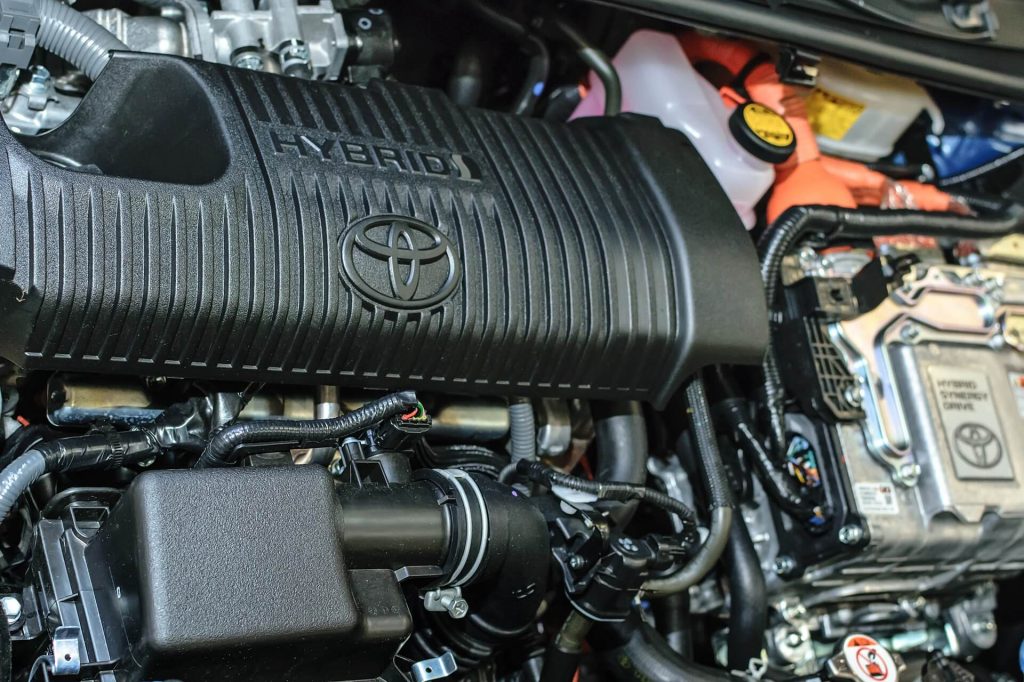
All of the fluids will have minimum/maximum marks. If fluids are low, someone has not been maintaining the car well, or it has developed a leak. Not a good sign.
When checking the engine oil, it should range from clear to black. If it looks like chocolate milkshake, there is a major problem. RUN AWAY. You can also smell the oil on the dipstick to see if it smells like gasoline. If it smells like raw gasoline, the engine is either injecting way too much fuel or you have bad piston rings. Either way, they’re bad.
If the oil level is WAY above the full mark, by an inch or more, then either some other fluid is making it’s way into the engine, which is very bad, or someone sucks at doing an oil change.
Remember to check the oil with the engine off and on level ground.
Some new cars don’t have dipsticks (mainly European). If so, you’re SOL.
Check the coolant in the reservoir. It should be green, pink, red, yellow, orange, blue, or purple, depending on manufacturer. If it’s rusty, walk away.
Remove the radiator cap (only if the engine is cold) and look at the cap and in the radiator. If you see any rust or chunky/gritty brown stuff, walk away. If it’s just water, walk away. Note: Ford’s yellow coolant almost looks clear.
Check the automatic transmission fluid. For the most part, it should be red, but sometimes amber or green. It may be black. That’s dirty. Not a deal breaker, but they haven’t been keeping up on maintenance. It should not smell burnt, though. That’s bad. If it looks like strawberry milkshake, that’s really bad.
Check the level on automatic transmissions while the engine is running in Park and after driving it and getting the transmission good and hot. The only exception is most Hondas. That’s checked after driving but with the engine off. Google it for the car you plan on looking at to make sure. Many new cars don’t have a transmission dipsticks, so again, you’re SOL there.
Start the engine and listen for noises
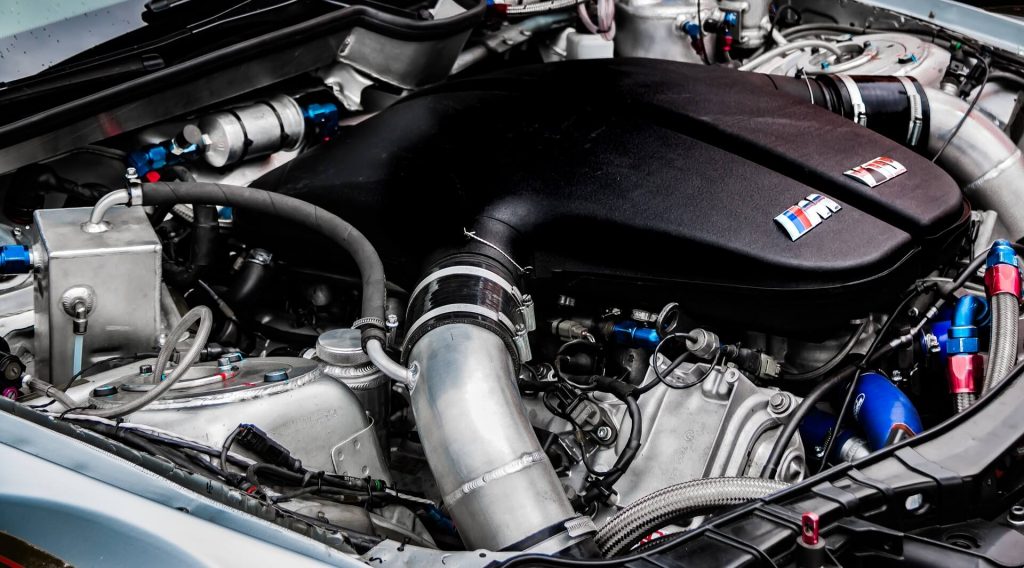
The engine should be cold. If it’s at operating temperature, the seller may have warmed it up to hide some cold start engine noises. Be wary. If it makes any unusual noises, walk away.
Check the maintenance records

If the vehicle has consistent oil change records at an oil change place, at least they’ve been changing the oil. Unfortunately, oil change places only check easy profitable stuff. It’s better than nothing, though.
If the records are all at an independent shop, that’s better. Indy’s will usually do a pretty thorough check up on the car when servicing it.
If the vehicle has all dealer records, that’s the holy grail. Dealers will find any nick nack that’s wrong and upsell it. They also commonly don’t do thorough diagnostics. This is an unfortunate effect of the way dealer shops operate.
If the vehicle needed repairs, on top of having new parts that needed replacing, it may have other new parts that it didn’t even need. Plus those new parts will be good quality OEM parts, not chines junk of questionable quality.
Check that everything works on the car

Check the A/C, the heater, the windows, the locks, the mirrors, the head/parking/brake lights, etc. If the owner neglected to fix obvious problems, what else did they decide not to fix?
Look under the hood and look for any hokey work
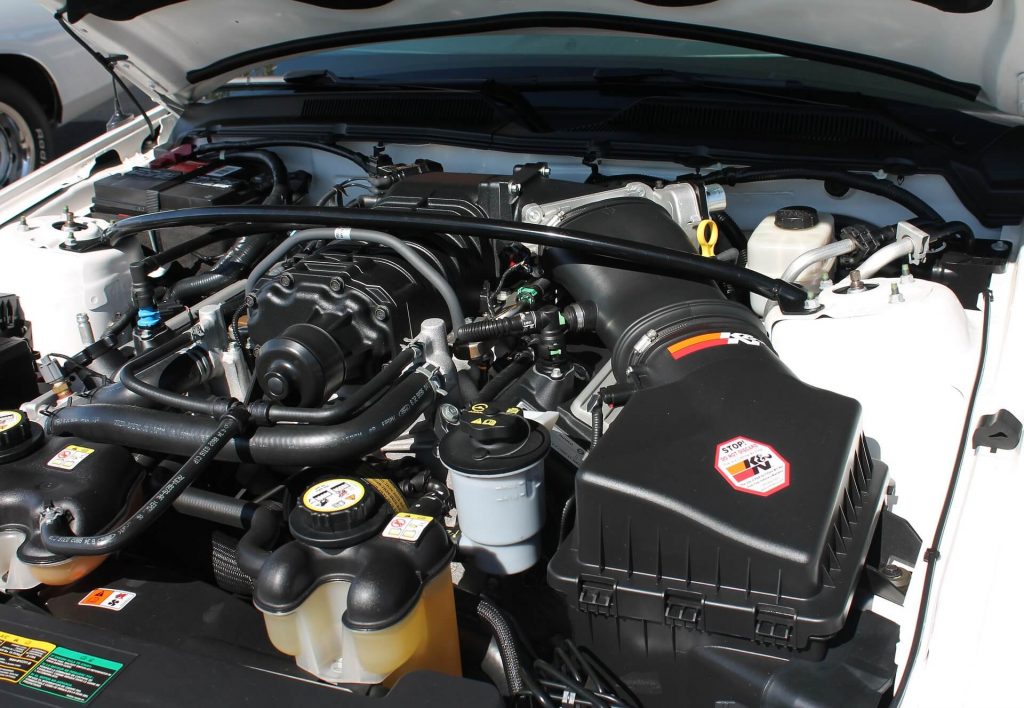
Random zip ties holding things on, tape, broken plastic pieces, a battery that can move around if you push on it, wires hanging, etc. If it looks like unprofessional work has been done on what you can see, how bad is what you can’t see?
How does the car look?
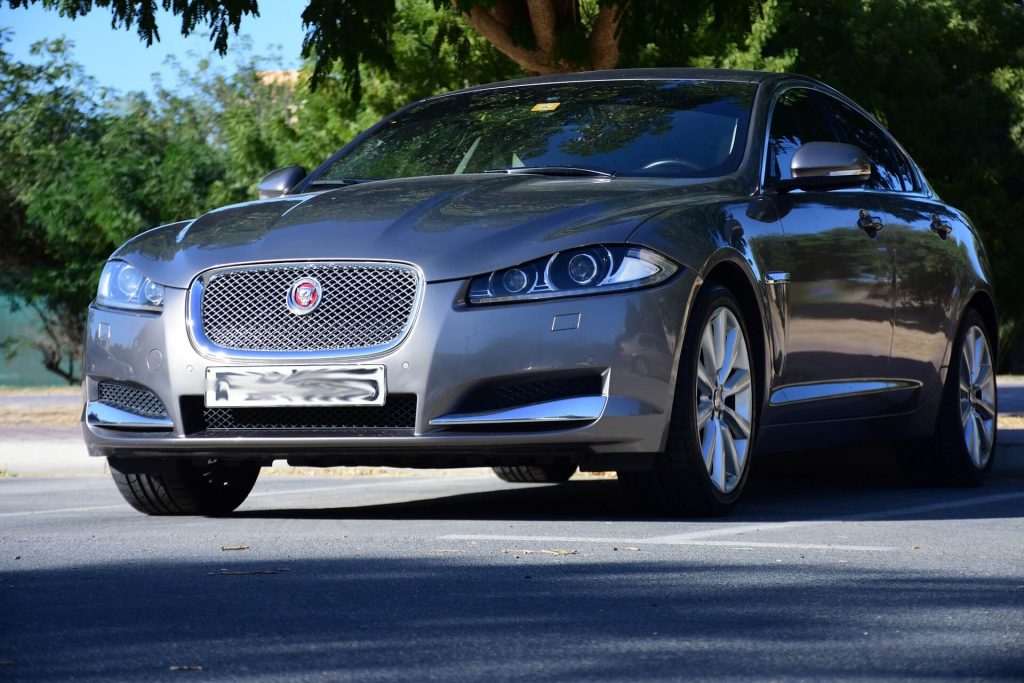
Is it dirty, full of scratches, stained? If the owner cares so little about the interior/exterior, they probably have the same attitude toward the mechanical part of it.
Check the tires
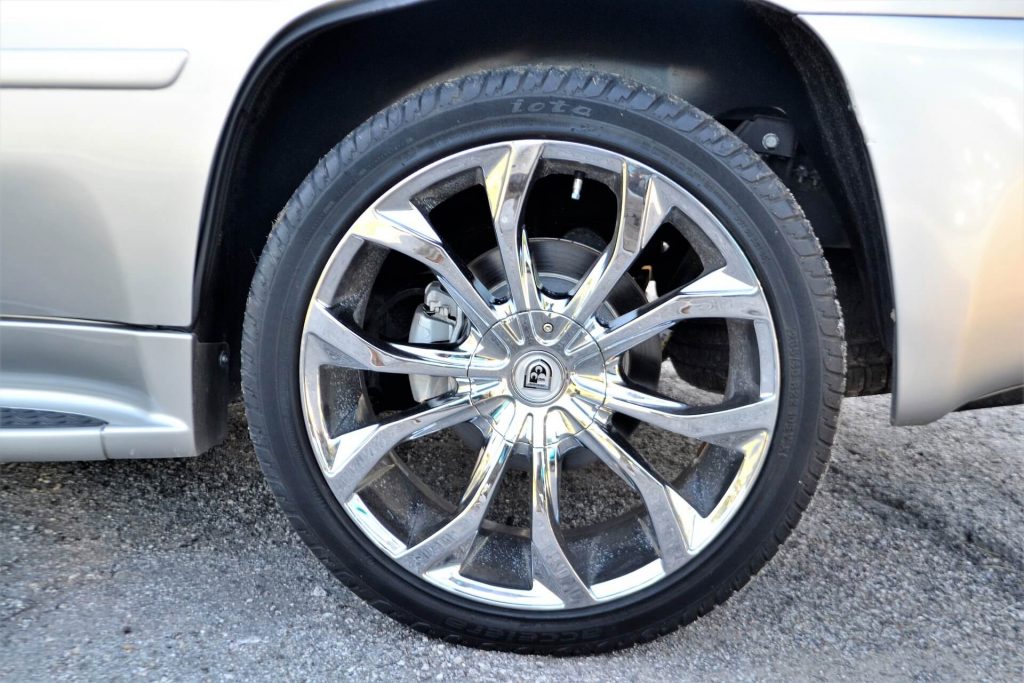
Aside from general condition, do they all match? If all the tires are different, they’re cheap/broke, and have probably cheaped out on a lot more than just tires. Lay your hand flat on the tire tread and light feel around the tires. If you feel a repeating pattern of flat spots/dips, you have suspension problems.
Look Under the Car
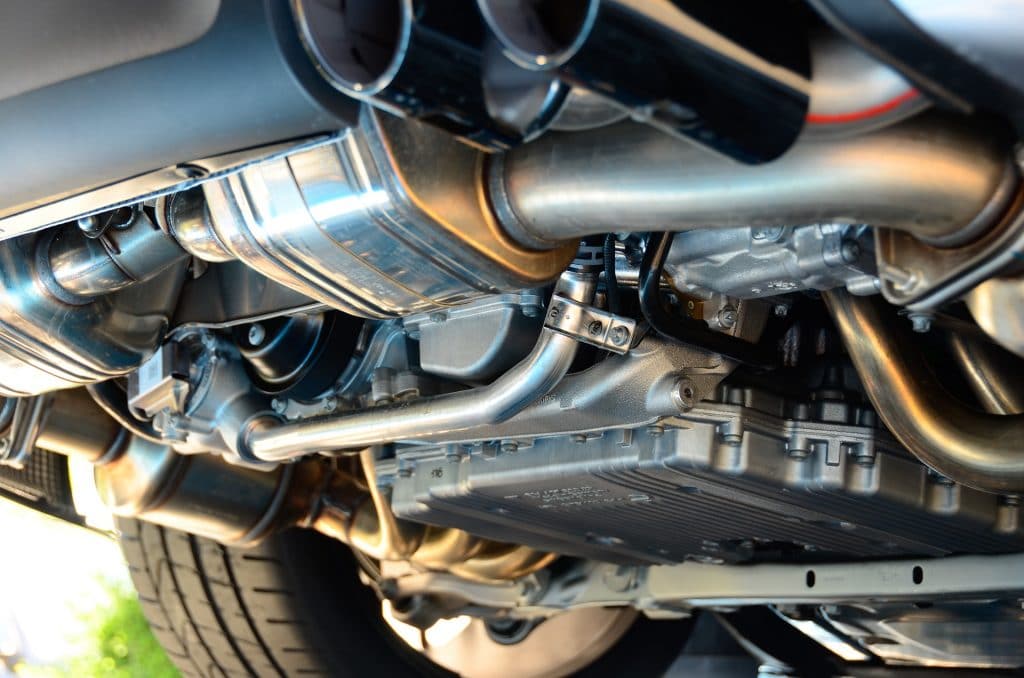
Always plan on looking under the car. A flashlight (not your cell phone) and a piece of cardboard to lie on while you do this is critical.
Look for oil stains. Look and smell for gasoline or coolant stains. Look to see if the various shields and covers are there. Check the condition of the exhaust system. And check to see if the catalytic Converter is there!
Try to stay away from used car dealers

While private sales can be risky, opting for reputable dealers that specialize in high-quality used vehicles with EchoPark ensures you’re looking at cars that have been thoroughly inspected and come with the peace of mind you’d want when shopping for a used vehicle.
Used car dealers get the majority of their cars from auctions. A lot of cars that go to auction are sent there by someone that doesn’t want it, usually because there are problems. Not all, but many.
New car dealers send trade-ins that are too old or the wrong make to put on their lot, and some of those are decent. However, the small used car dealers usually buy the bottom of the barrel cars at auction. They’ll fix the minimum needed with the cheapest parts possible to maximize profit. They’ll make it look pretty, though. Good chance you’re buying a polished turd.
Not all used car dealers are bad, though. Check reviews. Look at what they have on the lot. If they have a lot of high resale value cars on the lot, they’re buying the good stuff at acution. If all of their cars are under $10k, with a lot under $5k, move on.
Test drive the car

Drive it at different speeds up to highway speeds. Brake easy, brake hard. Find a crappy road or railroad tracks to drive over. Make sure there are no noises or vibrations.
Get it good and warm. When you’re done, open the hood and take a good whiff. Make sure there are no strong smells like burning fluids or other things.
Look under the car and see if anything is dripping or the bottom of the engine is covered in fluids. Bring a flashlight, it can get dark under there. Don’t be alarmed if you see water dripping under the car at about the same area as the base of the windshield/firewall. If the A/C or defroster was on, that is just condensate from the A/C system. Touch it. If it’s not oily and looks/feels like water, it should be OK.
If you’re test driving a manual car, the clutch engagement point should be somewhere in the middle of the clutch pedal travel. If it’s right at the top or right at the bottom, clutch repairs are in the near future.
Check Engine Data and Fuel Trims
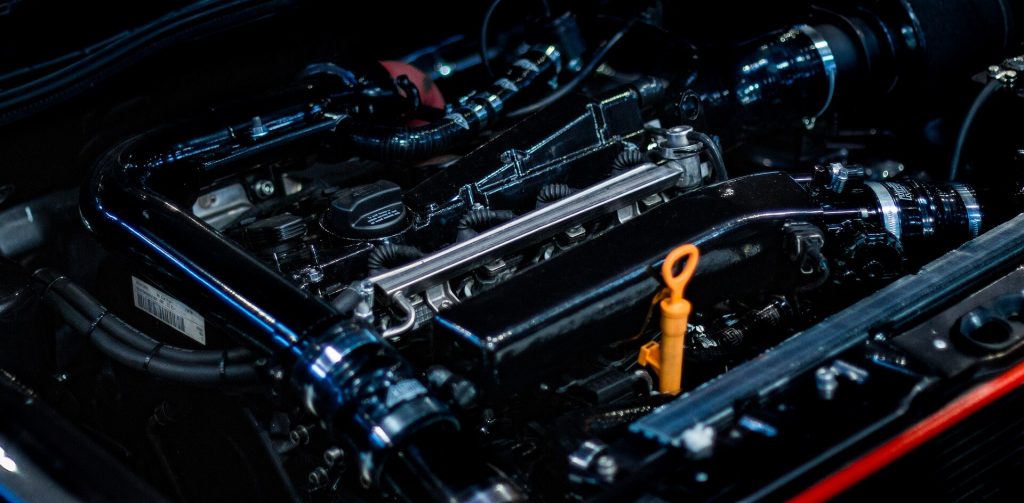
This one is a little more advanced, but not too difficult. It’s also pretty important. You’ll need your OBD scanner. What you want to do is look at the engine data and search for the fuel trims.
An engine computer injects fuel based on a bunch of sensor inputs. It has a base fuel map programmed into it that it references, based on those sensor inputs, and injects XXX amount of fuel.
There is an oxygen sensor in the exhaust system that analyzes the exhaust gas and acts like a quality control inspector. It tells the computer whether it injected too much or too little fuel.
The computer then makes adjustments to that base fuel map to make sure it’s injecting the proper amount of fuel. Those adjustments are called fuel trims.
A 5% fuel trim would mean the computer had to add 5% more fuel than the base map.
A -5% fuel trim would mean that the computer had to reduce fuel by 5% from the base fuel map.
In a perfect world, fuel trims would be zero. However, that’s rarely the case.
Fuel quality, different atmospheric conditions, engine wear, engine or sensor problems, etc, make it so that the base fuel map is never perfect, so the computer is always adding or subtracting fuel (usually it’s adding, but sometimes it’s subtracting).
I don’t like to see a computer adding or subtracting more than 10% fuel. -racefiend
Any more than that and there may be a problem. Any more than 15-20% and there is definitely a problem.
What you’re going to want to do is look at the data on the engine computer. You want to make sure you connect to the computer using the GENERIC OBD2 option on your scanner.
Different car manufacturers will call these fuel trims by different names, and display the percentage in different ways. If you connect to the engine computer the standard way, you may be confused trying to find and read the fuel trims.
If you connect using the generic OBD option, it’s always going to use a standardized display format across all vehicles. Some really cheap OBD scanners only connect using the generic OBD protocol.
You’re going to see a long list of a bunch of different data. Scroll through until you find “short term fuel trim” and “long term fuel trim”.
I’m not going to explain what the difference between those two data parameters are, as that doesn’t matter here, and may end up being confusing. I’m just going to tell you what to do with the values you see.
Short term fuel trim, depending on your scanner, may be displayed as: Short term fuel trim, STFT, ST, or ST%
Long term fuel trim may be displayed as: Long Term Fuel Trim, LTFT, LT, or LT%
Let’s assume your scanner uses the more common STFT and LTFT designation. You’re going to see a number after the letters, so STFT1 and LTFT1. The number means the “bank” or side of the engine.
A 4 cylinder engine only has one “side” so you’ll only see STFT1 and LTFT1.
However, a V6 or V8 engine has two sides of the engine. 3 or 4 cylinders on one side, and 3 or 4 cylinder on the other side, hence the V6 or V8.
The computer controls fuel independently for each side of the engine, so you’ll see a STFT1 and LTFT1 for one side of the engine, and STFT2 and LTFT2 for the other side. Don’t be alarmed if you’re looking at a V6 or V8 engine and you only see STFT1 and LTFT1. Many late 90s cars and some early 2000s cars didn’t control fuel separately for each side of the engine, and lumped both sides into one bank.
When looking at the short term and long term fuel trims, you’ll notice the long term fuel trim number stays pretty steady, but the short term fuel trim number may change a lot. This is normal. What is important to note is that they are cumulative. So if STFT=4 and LTFT=3, then your total fuel trim is 7%. Let’s take a look at some examples on a V8:
STFT1 : 3 … STFT2 : 6
LTFT1 : 2 … LTFT2 : 1
So the total fuel trim on bank 1 is 5% (3+2) and the total fuel trim on bank 2 is 7% (6+1). Each bank is below +/- 10%. That’s pretty good.
STFT1 : -5 … STFT2 : 3
LTFT1 : 3 … LTFT2 : 1
Bank 1 fuel trim is -2% (-5 +3) and bank 2 is 4% (3+1). Again, that’s good.
STFT1 : 6 … STFT2 : 7
LTFT1 : 10 … LTFT2 :15
Bank 1 fuel trim is 16% (6+10) and bank 2 is 22% (7+15). That’s not good. Walk away from this one.
Here’s one more that’s a littlte different:
STFT1 : -20 … STFT2 : -20
LTFT1 : 22 … LTFT2 : 20
Hey, 2% and 0% total fuel trim on each bank. SWEET! this car is running almost perfect! Well not really. Why is the LTFT adding 22% but then the STFT is taking a bunch of it back? There may be an intermittent issue going on here. So add the absolute values together as well (treat -20 as 20) and see what that total is. Here we have 42 and 40. There’s some interpretation required here that you’d need some experience to do, but I’d say anything over 25 when adding absolutes is cause for concern.
Check these numbers with the engine running at idle, and rev up the engine and hold it at about 2500rpms and check it there. You may see the STFT number change pretty quickly, so just use the average of the numbers you see for that one. If you have someone with you, you can have them check the numbers while you drive as well.
Practice this on a car you have access to beforehand, and analalyzing a car while you’re evaluating it to buy will go much smoother and quicker.
Don’t trust the person selling the car

Trust your eyes, your ears, and your instinct. You don’t know this person, they may be lying about the car, or try and tell you that the thing you’re worried about is no big deal, it’s just this or that.
Or they had a guy check it out and it’s a really easy/quick fix. Be patient and find the right car.
If something is fishy or doesn’t seem right, move on to the next car. A car is a pretty big expense.
Most people budget for the purchase price of a car and don’t consider there may be considerable extra expense in fixing major problems. Minimize the possibility of those extra expenses by inspecting the car the best you can.
I would recommend running through these things, and any others you want to add, on your current car, your parents’ cars, friends’ cars, etc. Do it several times. Get comfortable in making these checks so that when you’re doing them in front of some stranger on their car, you won’t forget anything.
Check for Accident Repairs
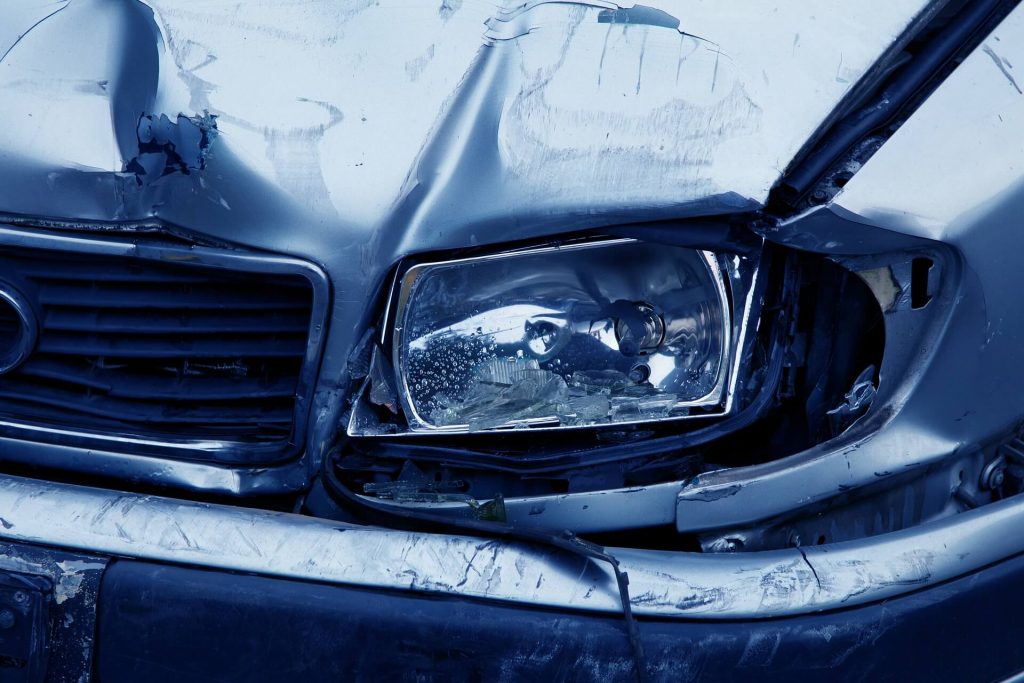
When you look under the hood, the color of the metal in the engine compartment area should be the same color as the car.
If you see different colors or primer, it’s had body repair. Also, if you look at the reflection in the car’s exterior paint up close and at an angle, you’ll notice that the reflection has a wavy pattern to it. That’s called orange peel.
Every car has it from the factory, except super high end cars. The orange peel pattern should be consistent all the way around the car. If the pattern changes in certain parts of the car, it’s been repainted in that area. Good chance it had an accident.
Another thing you can do is take a small magnet with you. You’re going to place the magnet against the car in as many areas as you can. Make sure you wrap it in a microfiber towel or something soft so you don’t scratch the car (it’s not your car).
The magnet should attract itself to the body and even stick to it. If there are spots where the magnet doesn’t stick as strong or at all, there is body filler there. It’s had body work.
Keep in mind that some body panels aren’t magnetic on some cars. If you can’t get the magnet to stick anywhere on an entire panel (like the fender or hood) then you probably have a non magnetic body panel (maybe fiberglass or aluminum). It’s possible that the whole body panel is covered in bondo, but that would be rare, as that would be an extremely poor repair.
Buying used from a dealership: Ask to see the title
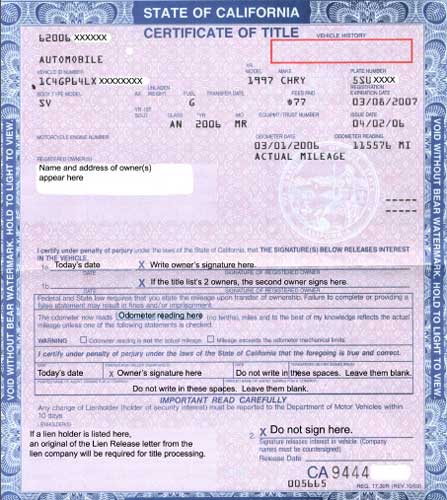
This is a “protect yourself” tip: If you are buying a used car from a dealer or private seller, ask to see the title. If they won’t do that, ask to see a copy of the title with the previous owner info blacked out. It should be a red flag if they refuse or blackened out more than just the registered owner’s information.
Why? First to make sure they actually have the title. When I was young and dumb, I was once burned by a licensed motorcycle dealer not having the title and lying about it. Although rare, some sellers don’t have their ducks in a row when selling a car and will sell the car before all of their documentation is completed.
This can turn out really bad for you if the seller never gets you the title or registers it to you. In my case, the dealer failed to tell me it was a consignment sale, failed to give the owner the money from the sale, which meant the owner never gave the title to the dealer. The dealer then suddenly closed his business. It lead to a large lawsuit with many involved parties.
Secondly, seeing the title will potentially allow you to see how many other dealers the car passed through before yours. In most states, dealers are supposed to record a running list of dealer transfers. Seeing a dealer-to-dealer transfer isn’t an automatic red flag. Dealers swap cars ALL THE TIME when a customer wants a certain car. Dealers also get inventory from auction ALL THE TIME (more on this later).
What is a red flag is an incomplete log, such as not seeing your dealer logged on title’s running list, or several dealer-to-dealer transfers. Several transfers is a sign that it is a lemon that keeps getting passed around.
Third, check the title to make sure the title isn’t “branded”, such as being a salvage car, flood car, scrap car, etc. You’ll also see if there is an outstanding lien. Run away and don’t look back if it’s a branded title unless the seller is honest about it and you know what you’re getting into.
Buying a branded titled car is NOT a risk that an average person should venture into. Best case scenario? The car was totaled from simple cosmetic damage such as hail damage. Average case scenario? The car was in a crash in which the damage exceeded what the car was worth.
Worst case scenario? The crashed car was fixed just barely enough to look good but still has a bent frame, has missing airbags, has unknown amounts of hidden mechanical damage, has severe electrical issues, etc.
Bonus Info: As a dirty secret of the industry, it isn’t just low cost and questionable cars that get sent to auctions in modern times.
Lease returns? The dealers have zero ownership of lease returns. It’s the leasing company that does. Most lease returns are sent to auction.
Low mileage trade-in’s? Many get sent to auction by dealers that can’t easily sell the vehicle. An example being a Jeep dealer that is flooded with passenger car trade-ins and wouldn’t be able to sell yet another one.
A dealer can’t sell a normally good vehicle after a couple months for whatever dumb reason? It’s sent to auction.
Brand new cars when a dealership goes out of business or when they just consolidates? They’re sent to auction.
I think many people would be shocked that almost all dealerships heavily supplement their used car inventory from auctions, or buy from wholesalers that get them at auctions. Just assume the used car you’re looking at came from an auction unless the dealer came prove otherwise.
Hint: Dealers hate saying it was an auction vehicle because of the stigma and will instead simply say it was a trade-in. Don’t believe it unless they prove it. They don’t consider it a lie because it was likely a trade-in at another dealer, but your dealer likely got it at auction.
NEVER, EVER BUY FROM A “BUY HERE, PAY HERE” DEALER. There is a 99.9% chance they are a scum dealership catering to people with no credit or people that are completely clueless to interest rates and such. For those with no credit, you’re better off saving what you can and then posting a wanted ad on Craigslist for a cheap car.
Scan the VIN
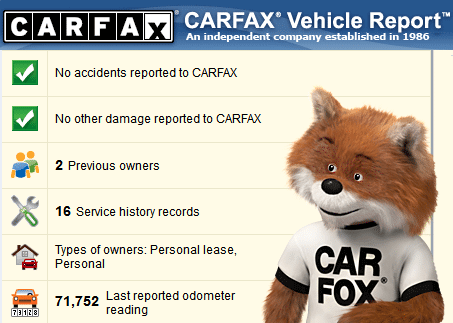
Finally you can (for free) use the “my Carfax” app and scan the VIN and get a quick maintenance report that way. Caution … not all shops post data to CarFax.
Search forums on the make and model and year for issues. Look at technical service bulletins. Have your research done ahead of time and use that in negotiating a price.
When buying a used, older car, buy on condition and service history, not mileage.
A 5 year old car with 20k miles sounds great until you realise it means loads of short journeys where the engine, lubricants, oil and coolant has never got up to temperature properly.
Many of these fluids act as lubricants or get thinner when fully up to temperature allowing them to penetrate small nooks and crannies better, keeping them working properly.
A 5 year old car with 100k miles might seem like something to avoid, but chances are if it wasn’t a taxi it’s done mostly freeway/motorway miles where everything is warm and working well. It’s not particularly stressful on components like continuous stop/start town driving and as long as everything has been serviced and replaced on time may not be the bad decision. A correctly maintained car and engine should easily be capable of 100k miles or more.
Check for any outstanding recalls. For a Ford Focus it’s Ford ETIS and you can check it online for example. Other manufacturers have their own online checkers. These recalls can be minor or major and save thousands in repairs.
Insight from Used Car Salesman Grandmasbroach
I’d make a small correction as someone who sold cars for about 7 years. Buying from a dealer can be a good thing. It just depends what they offer with the vehicle in the way of warranty and maintenance. I’m not in the biz anymore and have no dog in the fight here. I just want you nice people to have a better idea of what you’re doing when buying a car.
I worked for a dealer that actually cared about our customers. What you want to do, is go to a dealer that sells new AND used cars. Not what we call the rock chip shops. Which, are the purely used car dealers. They buy their cars cheap as possible on trades or auctions, Jack the price up, you talk them down a thousand bucks, think you won, and they’re laughing all the way to the bank with your money. You just spent 6k on a car they bought for 3k!
A respectable dealer will show you the INVOICE that they purchased the vehicle for. They are a business at the end of the day and aren’t selling to you at the same price. They are going to make a profit, just not as much.
You can ask the sales rep this question too. Are you guys a volume or gross profit store? Some dealers will have hundreds of run of the mill cars like your Malibus, camry, corolla, etc and ask for a small profit on a lot of vehicles. Others will carry the harder to find stuff, and go for a bigger profit in hopes you’ll make a purchase based on emotion rather than logic. They don’t have as many vehicles though and are usually easy to spot.
One thing I can confidently say, in all my years doing that, I never saw someone get a warranty that eventually didn’t pay for itself. At least get one that covers your power train. If you’re buying a used car, it’s probably safe to say you’re not rolling in money like Scrooge Mcduck. A good way to know what that type covers, is the transmission, and anything that gets fed oil in the vehicle system.
You can determine monthly payment pretty quickly using this little formula. For every thousand dollars that you finance, it will cost about $20 per month. If you finance $10k, you’re payment will be right around $200 per month. Then, closer to $15-$19 on spectacular credit. So, if I see grandma and grandpa pull up in their 1996 Cadillac in mint condition, I can start to safely assume they have decent credit if not great, and spit out payments while we walk on the lot.
Dealerships are set up from the minute you pull in, to the moment you’re driving off in a new whip. As a successful car sales rep, I was looking at your car as you pull in. The trade appraise is almost meaningless to the customer. The real reason we do this, at least the ones actually selling, is to get information on you to build repoir.
If I see dog hair all over the seats. Guess what I’m going to say when we talk numbers? Oh, looks like my girlfriend just text me to show me this cute thing my dog just did, check it out! Oh man, their not even part of the family, they are family! My little baby… Then the customer is like, oooooooooh! I have floofer too! I told my girlfriend to text me that to sell you a car. That’s why you only see the picture and not my conversation.
Another one, car seats were my favorite to see. The more of them the better. Now I know what the selling points are. We gotta get you in something safe for your babies! It just so happens that I’m going to convince you safe really means, a big, way over-priced SUV. You deserve you know? Tell me, how hard do you work and slave away for your babies? We all know it’s worth it, but what have you done for yourself lately? I think you deserve to have a safe, comfortable vehicle that you can be proud to drive. You can say, this is mine, and I deserve it! Your kids deserve a safe vehicle to ride in everyday too. You can’t out a price on safety or gratification, you just can’t. Let’s get this thing cleaned up, and get you out of here in your new car? Big smile from me.
The point of that is just to show you that cars sales reps, are probably the best at selling you things you don’t need out of almost any other industry. The dealership is literally set up to do this. The entire process is a sham, and set up to get you to buy.
BUT AND HOWEVER, don’t shoot yourself in the foot by not going to a respected dealership in your area who has the car you want. Get a solid warranty on it and you’ll be alright.
The bigger the dealership, the more expendable money they have. The more expendable money they have, the more likely they’ll help you out in a pinch. Some, definitely not all, want to do right by you so you come back again for the next car. That, and tell all of your friends how good of a job I did so go to him and no one else.
I really tried to do right for people. Now, there were definitely people that treat you terribly just because you sell cars. If some of you knew how much money you can make selling cars, you’d drop out of college, and go do it. I cleared six figures my first year. It was up from that, and even got close to $225k one year.
Thing is, say bye to your family. The dealership is now your home. You will spend at the minimum, 50 hours a week, and that’s a short one. I got out because I was working ten to twelve hour days, six days a week, every week, and took one small five day vacation to fly to Florida for my brother’s wedding. That was it for the six or seven years I did it. If you look up on glass door the average for a car sales rep. It is waaaaaaay off. The reason for this is because about 95% of people who try, fail in the first few months. This drags the average down to the mud.
Look at what the top 10-20% are making because either you’ll make that, or you won’t be selling cars at all. You will get fired. Or, sick of the hours and lose all motivation to stay at it. It is a fucking grind, and why I don’t do it anymore. Even at the top it was the most stressful job I have ever had. I eventually finished my degree and took a Monday through Friday, 9-5er. If you’re young and want to make some money, read a few car sales books, put a suit and tie on, and go to your nearest dealer. It’s commission. So, you’ll either make them money. Or, waste your time at the dealership. If you don’t start putting your chalks on the board in a few months, they’ll just launch you as dead weight.
You know what? It took me 3 dealerships before I found my niche and started making real money. In that industry, you must learn to persevere, never quit, and just keep going at all costs. You’ll make it with that attitude, you have my word.
Oh, I wanted to add this to help with negotiations and forget. So, it’s out of place at the end here as I’m typing on my phone and not about to do that level of editing. Anyways, stick to the BLUEBOOK PRICE!!! That goes for buying a car, and trading yours out.
It doesn’t matter what the sticker says!!! I promise you this. First, if they won’t show you the invoice, walk away immediately! I would show the invoice, and after that deal by asking the customer what they think a fair profit was for us. 5%? 10%? Did you have a number in mind?
Obviously I’m not selling under invoice unless my manager says move the unit and sell it. Here’s the invoice, do whatever you want, don’t go under x number, if you sell it I’ll give you x commission since the profit is gone.
We have to do lot upkeep, wash the cars, change the oil as per manufacturer recommendations, etc. The cars start racking up money just sitting on the lot. If they sit for a year or more, it’s time to move it. I’m rambling again…
Here’s the trap you don’t want to get stuck in. I saw so many people pass up legit amazing deals simply because we refused to negotiate on them. We were rock bottom on it to start. A lot of people don’t think they got a deal unless they got us to lower price. Here’s the scenario. Dealer A has a car liststed for $10k, and it books out at $9.5k. Most people would rather go to dealer B where the car is listed for $13k. Then, talk them down $2k, and buy that same car for a full thousand dollars more, all because dealer A wouldn’t haggle. So, watch out for this, and stick the BLUEBOOK. It exists for a reason, use it.
Buying a car is the second biggest purchase most people will make. I really tried to not be the slime ball and get people what they wanted at a good price. I had no interest in ripping anyone off, and told the managers so when I started. I told them if I do this, I’m doing it right. I thrived on return customers and referrals. Word got out that there was actually a car salesman who was on the customers side and not just trying to make a ton of money.
Tldr, I sold cars for quite a few years.
Experts Contributing to this post include:
- /u/racefiend – Mechanic and auto shop owner of Wrench Works LLC in Vacaville, CA.
- /u/BossMaverick – Automotive expert.
- /u/grandmasbroach – Ex-Used car salesman.
Pin This
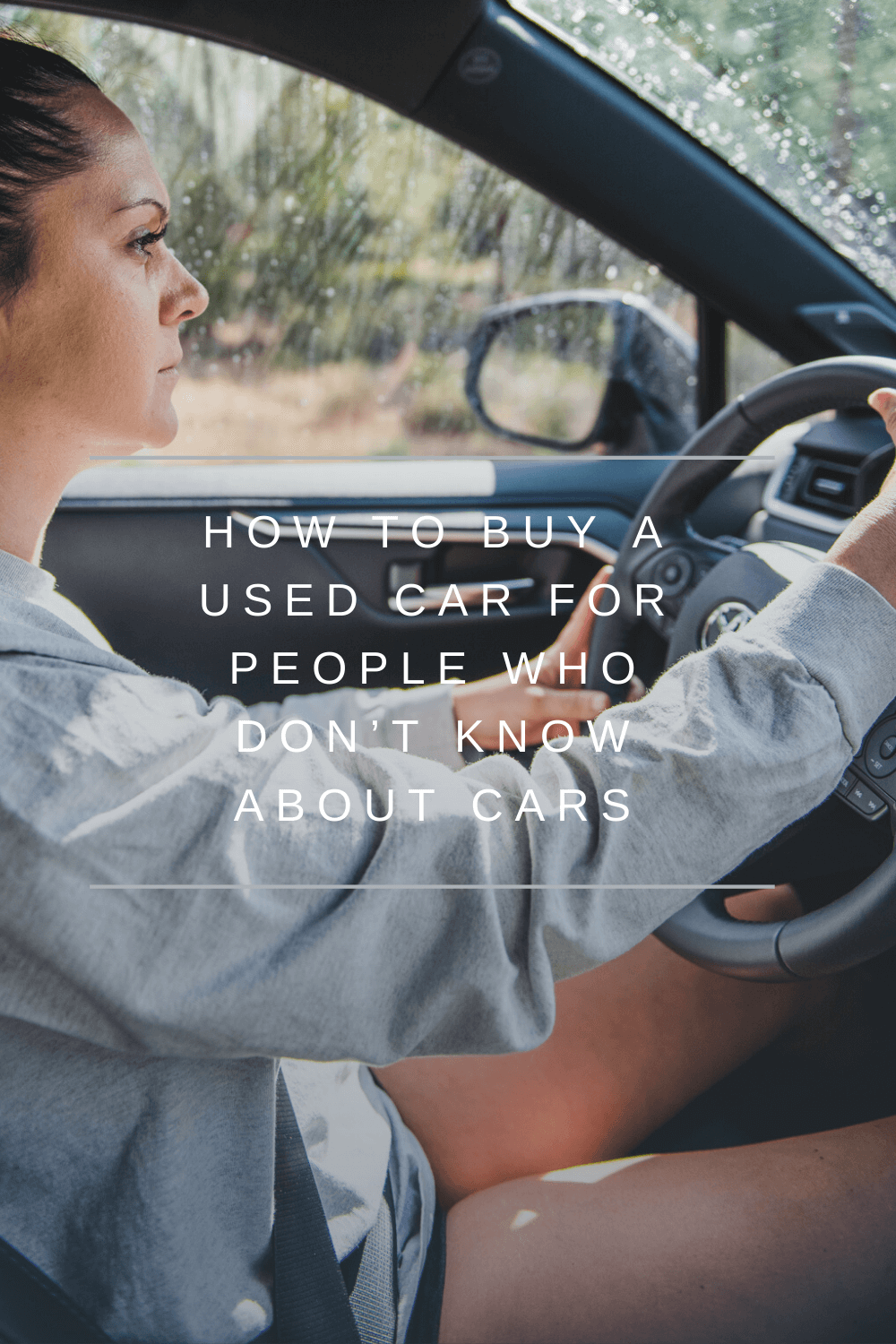
- About the Author
- Latest Posts
I strive to paint vivid landscapes with my words, bringing the magic of far-off lands and enchanting aromas to life for my readers. Combine passion for exploration and the art of gastronomy in an unending ode to the senses. When I’m not traversing the globe, I find solace in the earth beneath my fingertips, tending to my garden and working on projects around my verdant oasis. MK Library serves as a beacon, guiding fellow travelers and homebodies alike to embrace sustainability, nurturing both our planet and our souls with purpose. Full Bio.

